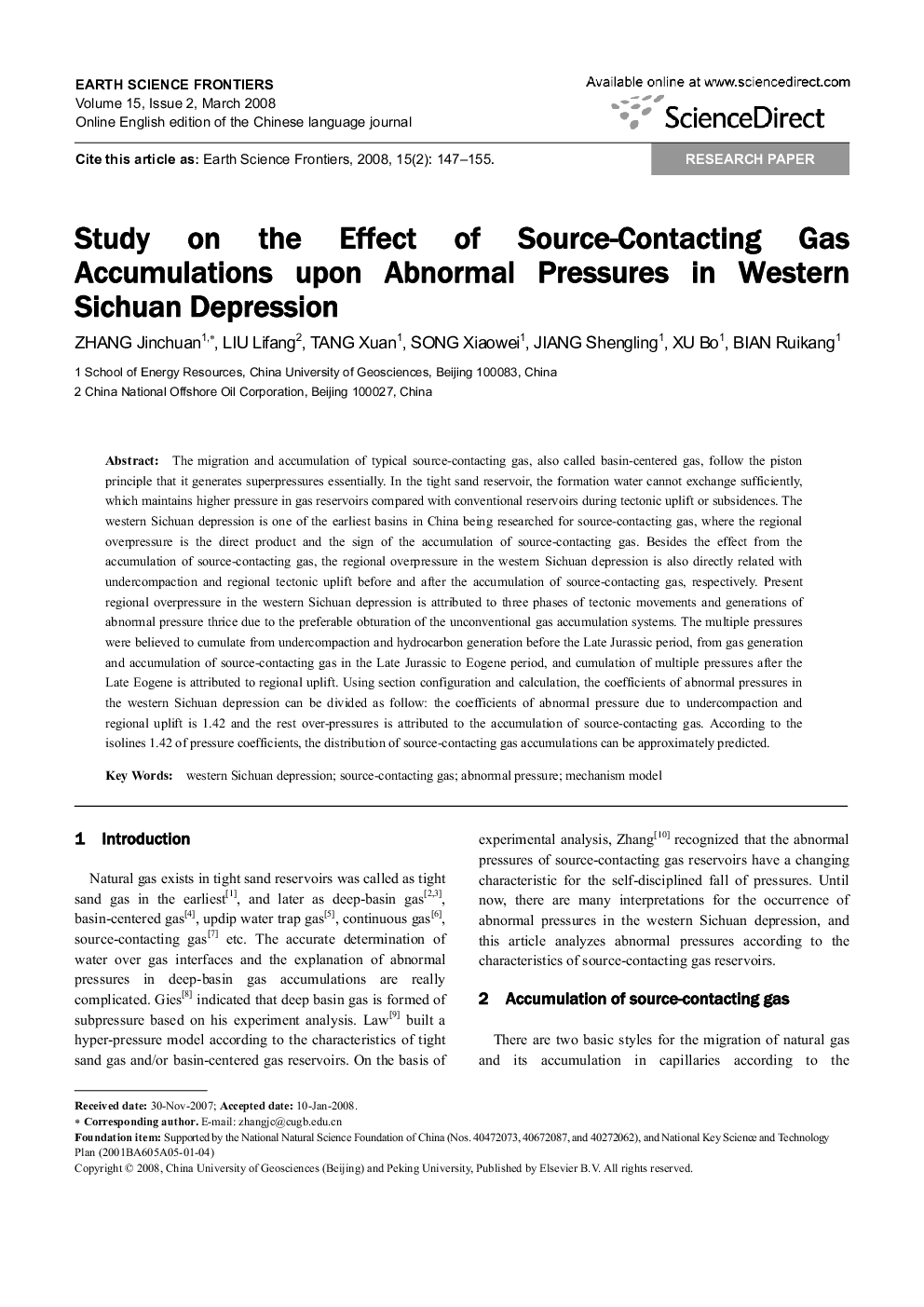| Article ID | Journal | Published Year | Pages | File Type |
|---|---|---|---|---|
| 4701641 | Earth Science Frontiers | 2008 | 9 Pages |
The migration and accumulation of typical source-contacting gas, also called basin-centered gas, follow the piston principle that it generates superpressures essentially. In the tight sand reservoir, the formation water cannot exchange sufficiently, which maintains higher pressure in gas reservoirs compared with conventional reservoirs during tectonic uplift or subsidences. The western Sichuan depression is one of the earliest basins in China being researched for source-contacting gas, where the regional overpressure is the direct product and the sign of the accumulation of source-contacting gas. Besides the effect from the accumulation of source-contacting gas, the regional overpressure in the western Sichuan depression is also directly related with undercompaction and regional tectonic uplift before and after the accumulation of source-contacting gas, respectively. Present regional overpressure in the western Sichuan depression is attributed to three phases of tectonic movements and generations of abnormal pressure thrice due to the preferable obturation of the unconventional gas accumulation systems. The multiple pressures were believed to cumulate from undercompaction and hydrocarbon generation before the Late Jurassic period, from gas generation and accumulation of source-contacting gas in the Late Jurassic to Eogene period, and cumulation of multiple pressures after the Late Eogene is attributed to regional uplift. Using section configuration and calculation, the coefficients of abnormal pressures in the western Sichuan depression can be divided as follow: the coefficients of abnormal pressure due to undercompaction and regional uplift is 1.42 and the rest over-pressures is attributed to the accumulation of source-contacting gas. According to the isolines 1.42 of pressure coefficients, the distribution of source-contacting gas accumulations can be approximately predicted.
